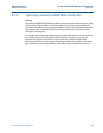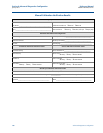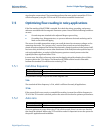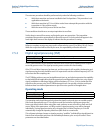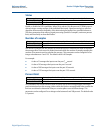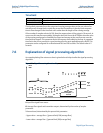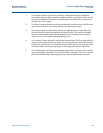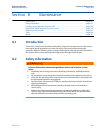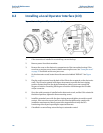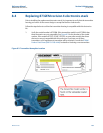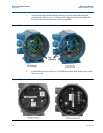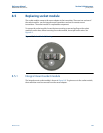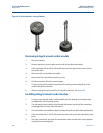
135
Reference Manual
00809-0100-4444, Rev AC
Section 7: Digital Signal Processing
January 2015
Digital Signal Processing
1. This scenario is that of a typical non-noisy flow. The input flow signal is within the
percent limit tolerance band, therefore qualifying itself as a good input. In this case the
new input is added directly into the running average and is passed on as a part of the
average value to the output.
2. This signal is outside the tolerance band and therefore is held in memory until the next
input can be evaluated. The running average is provided as the output.
3. The previous signal currently held in memory is simply rejected as a noise spike since
the next flow input signal is back within the tolerance band. This results in complete
rejection of noise spikes rather than allowing them to be “averaged” with the good
signals as occurs in the typical analog damping circuits.
4. As in number 2 above, the input is outside the tolerance band. This first signal is held in
memory and compared to the next signal. The next signal is also outside the tolerance
band (in the same direction), so the stored value is added to the running average as the
next input and the running average begins to slowly approach the new input level.
5. To avoid waiting for the slowly incrementing average value to catch up to the new level
input, an algorithm is provided. This is the “time limit” parameter. The user can set this
parameter to eliminate the slow ramping of the output toward the new input level.



